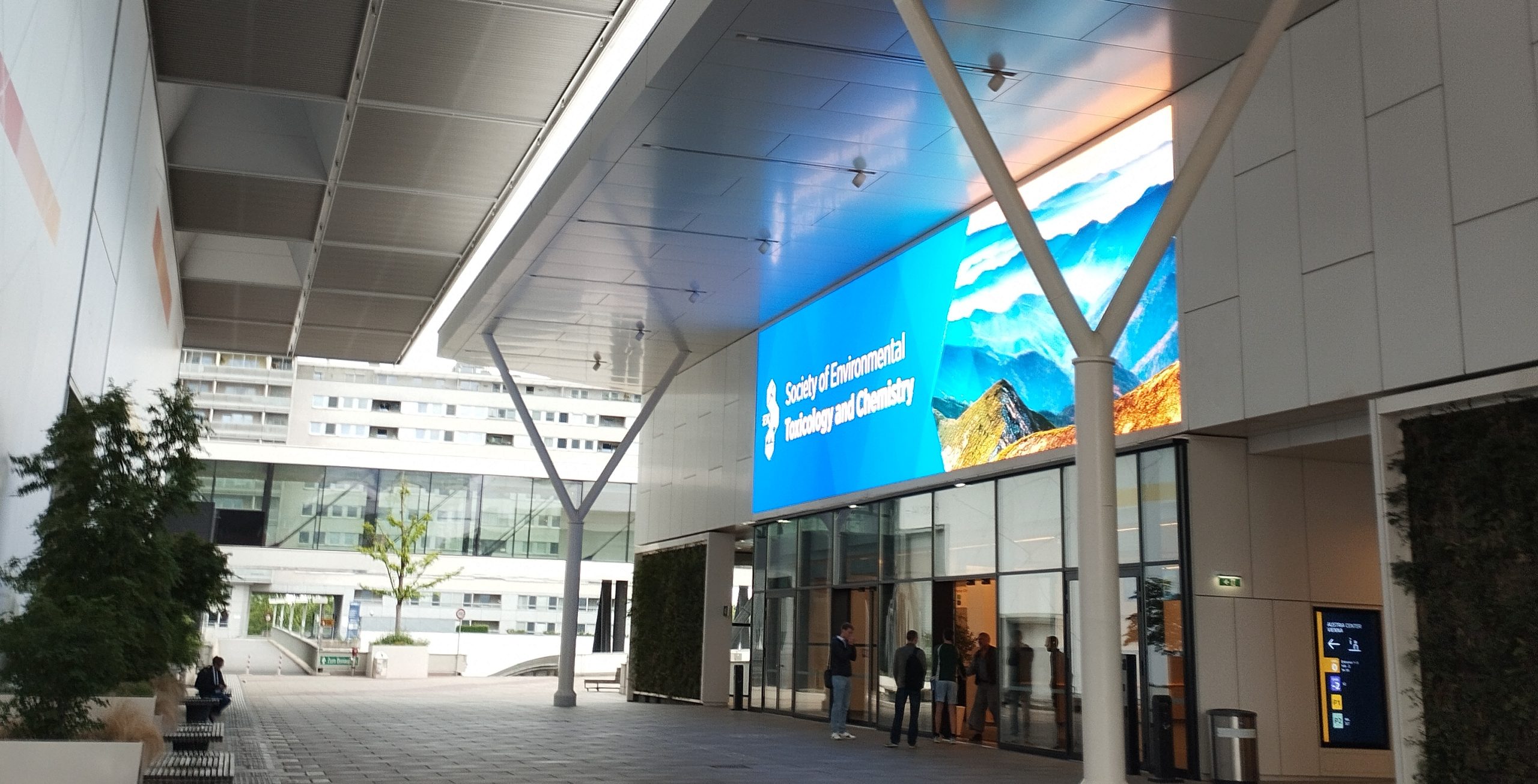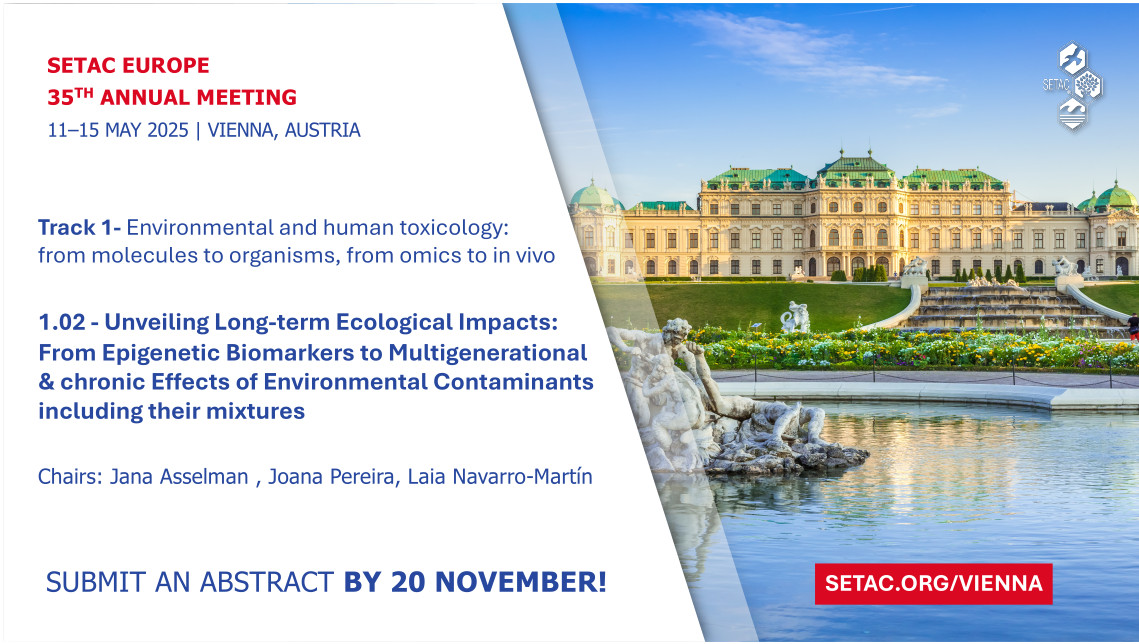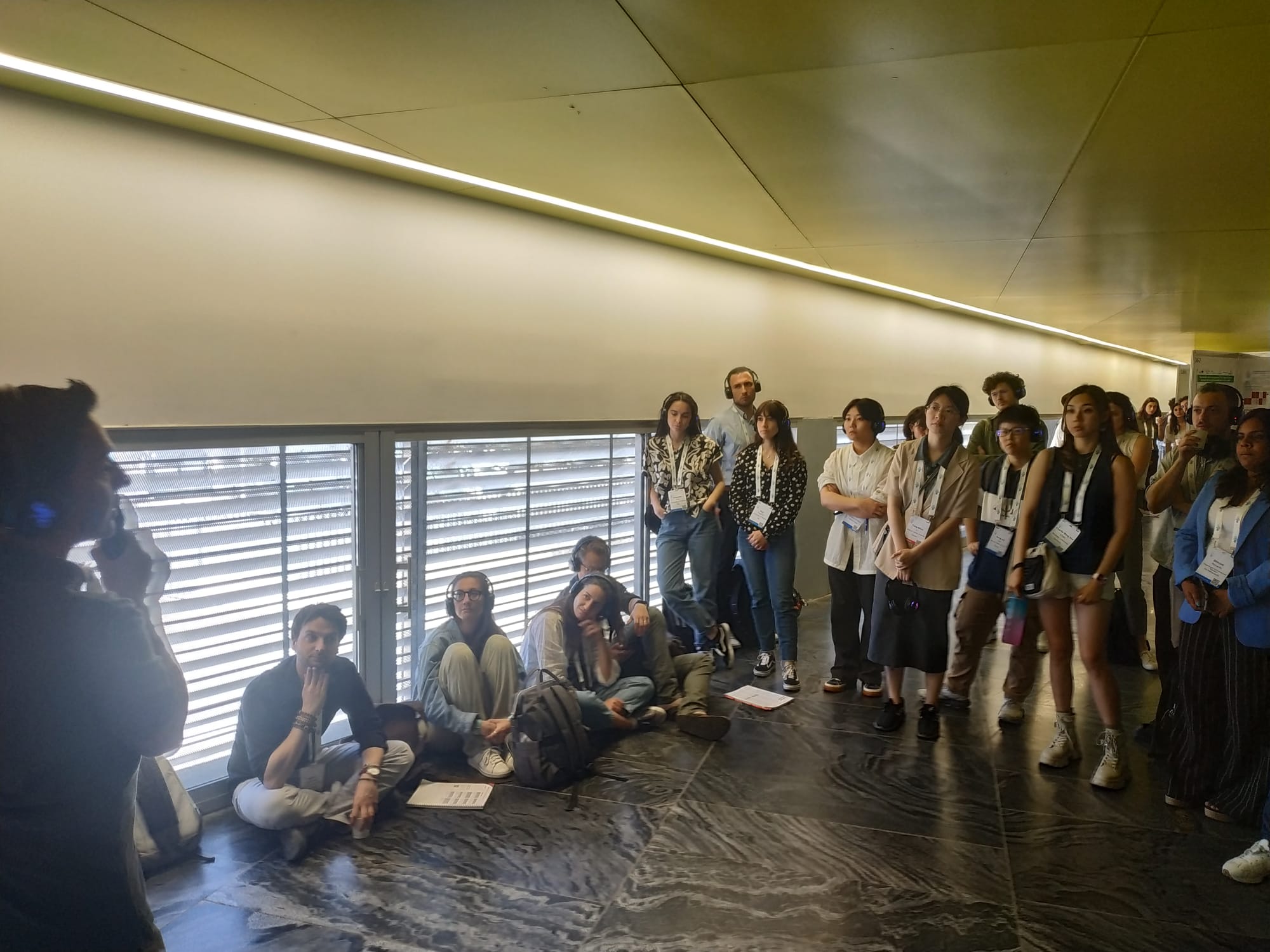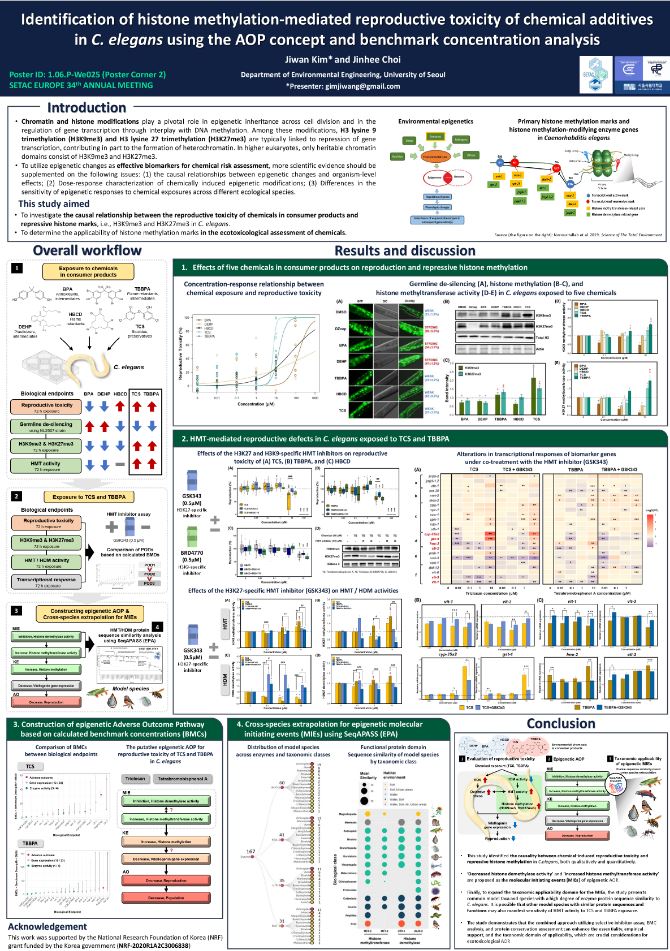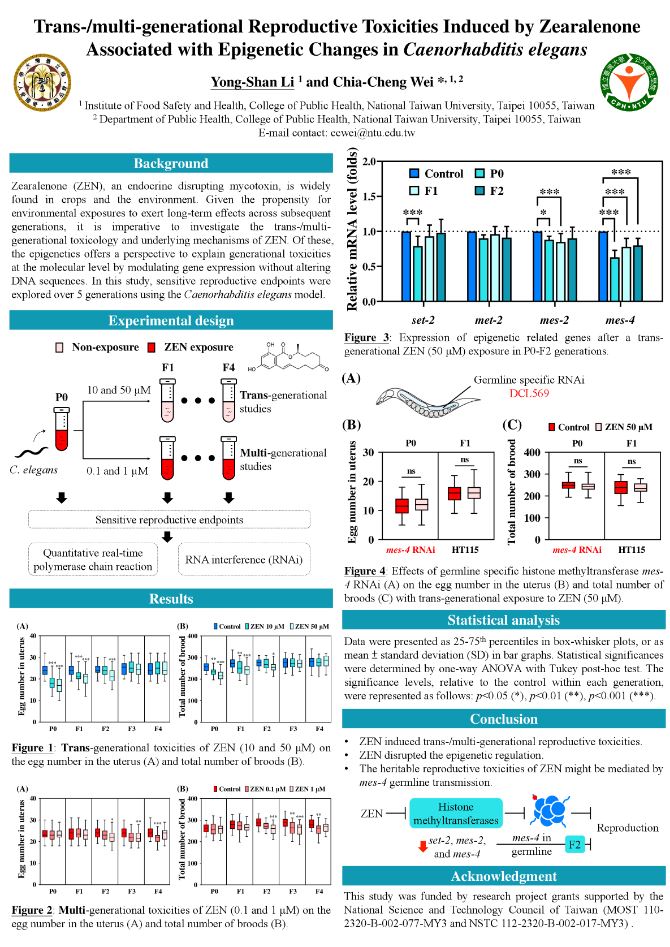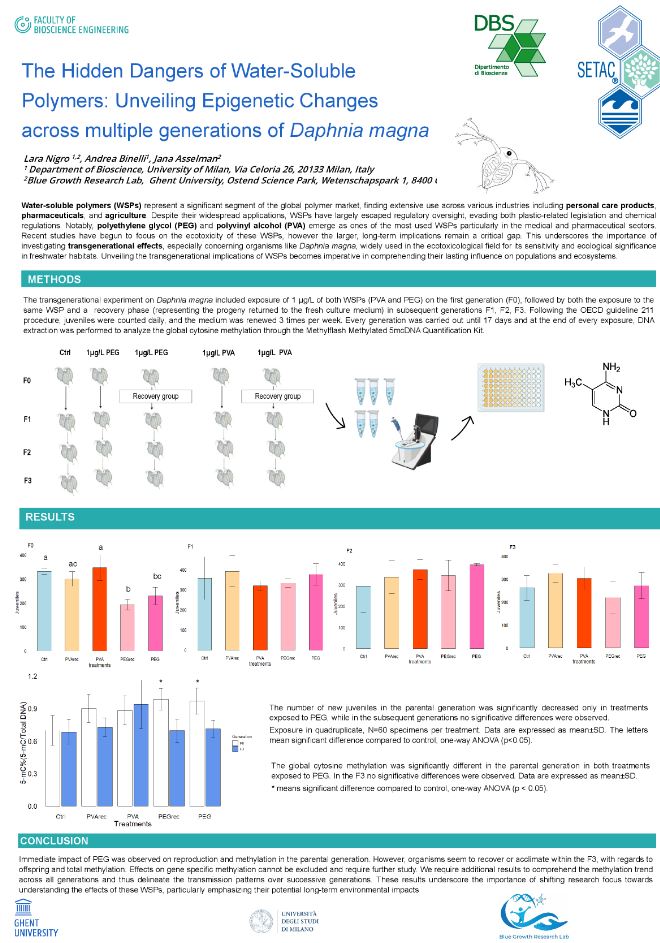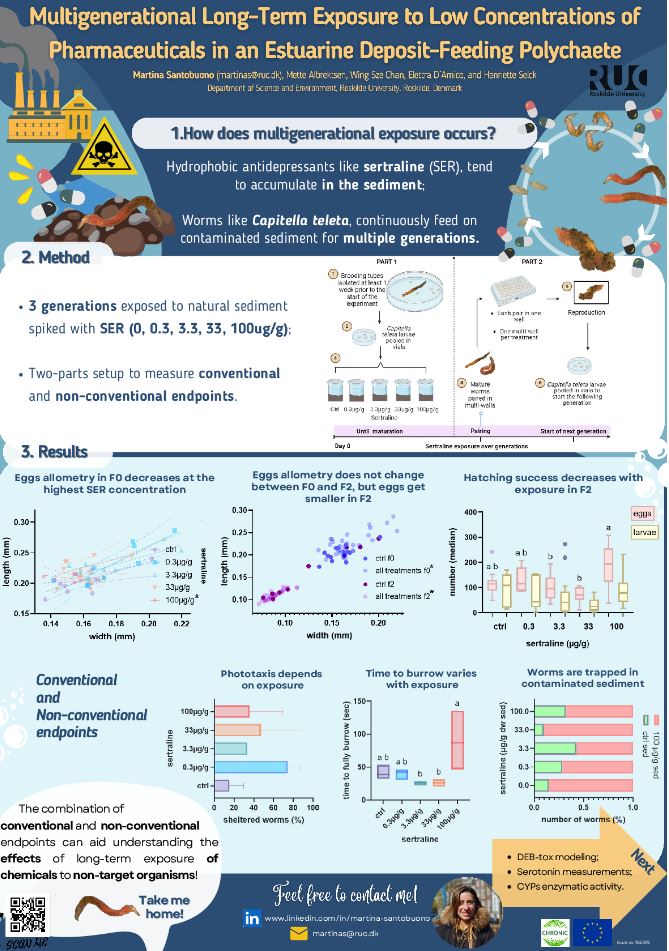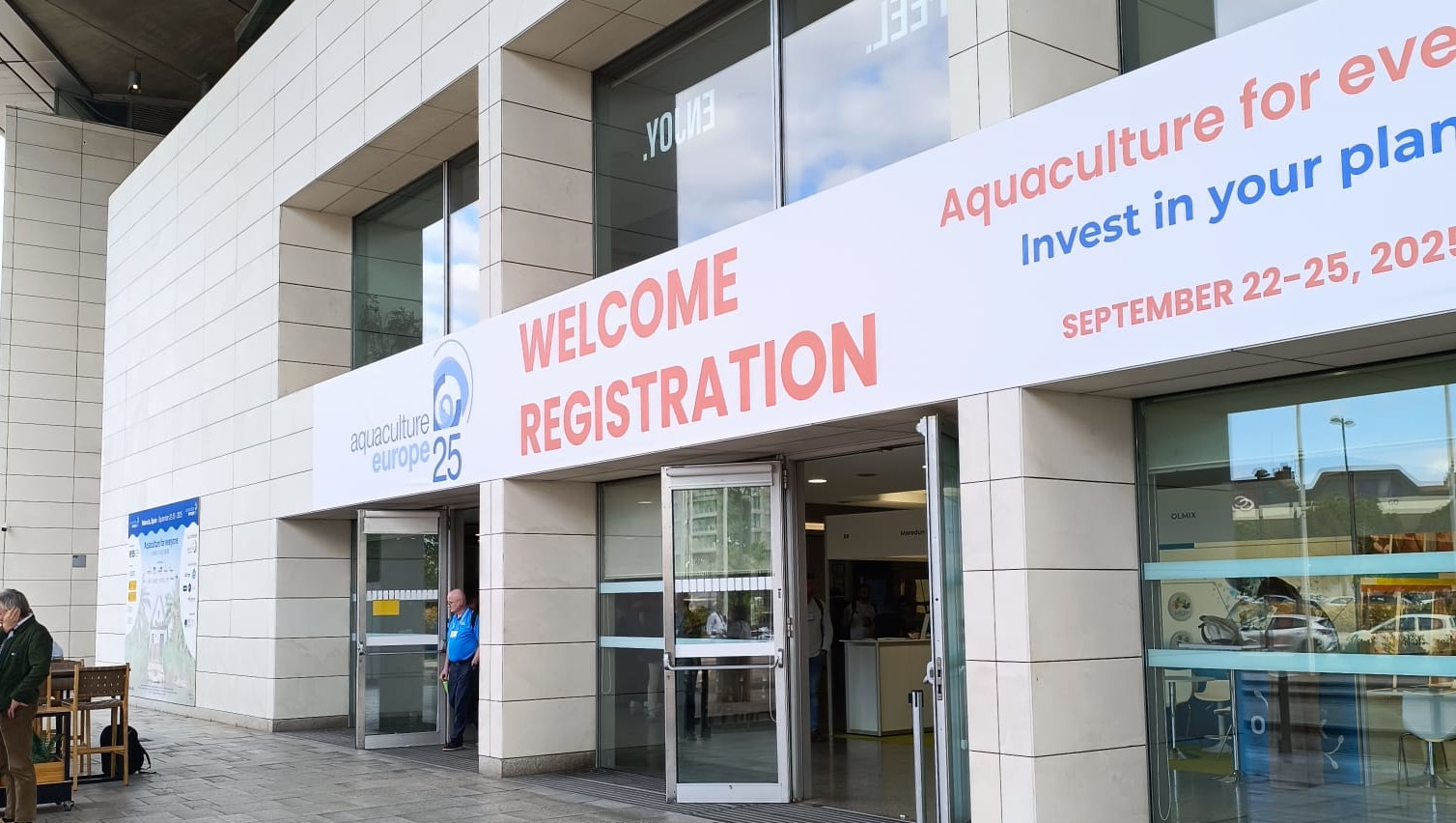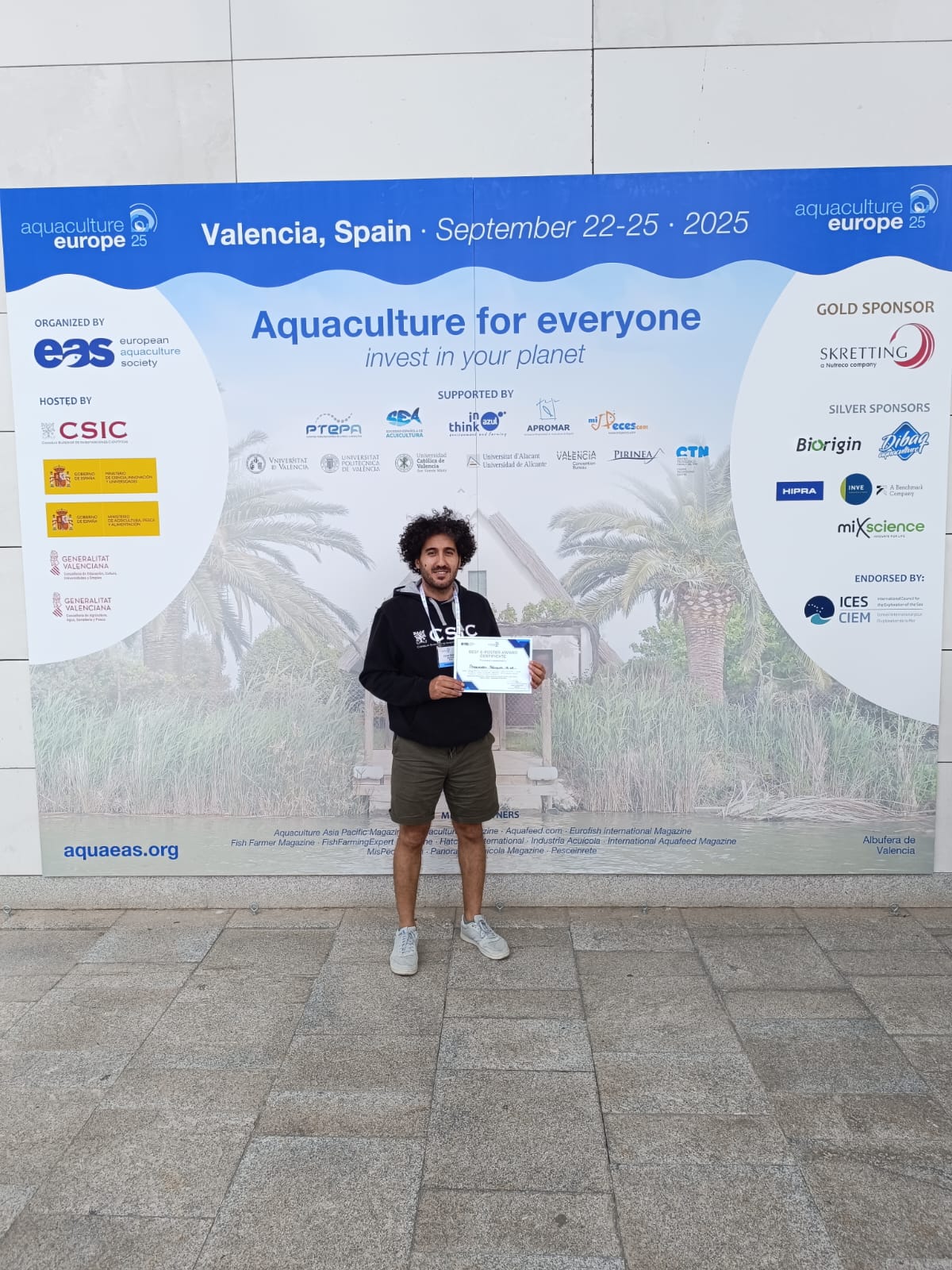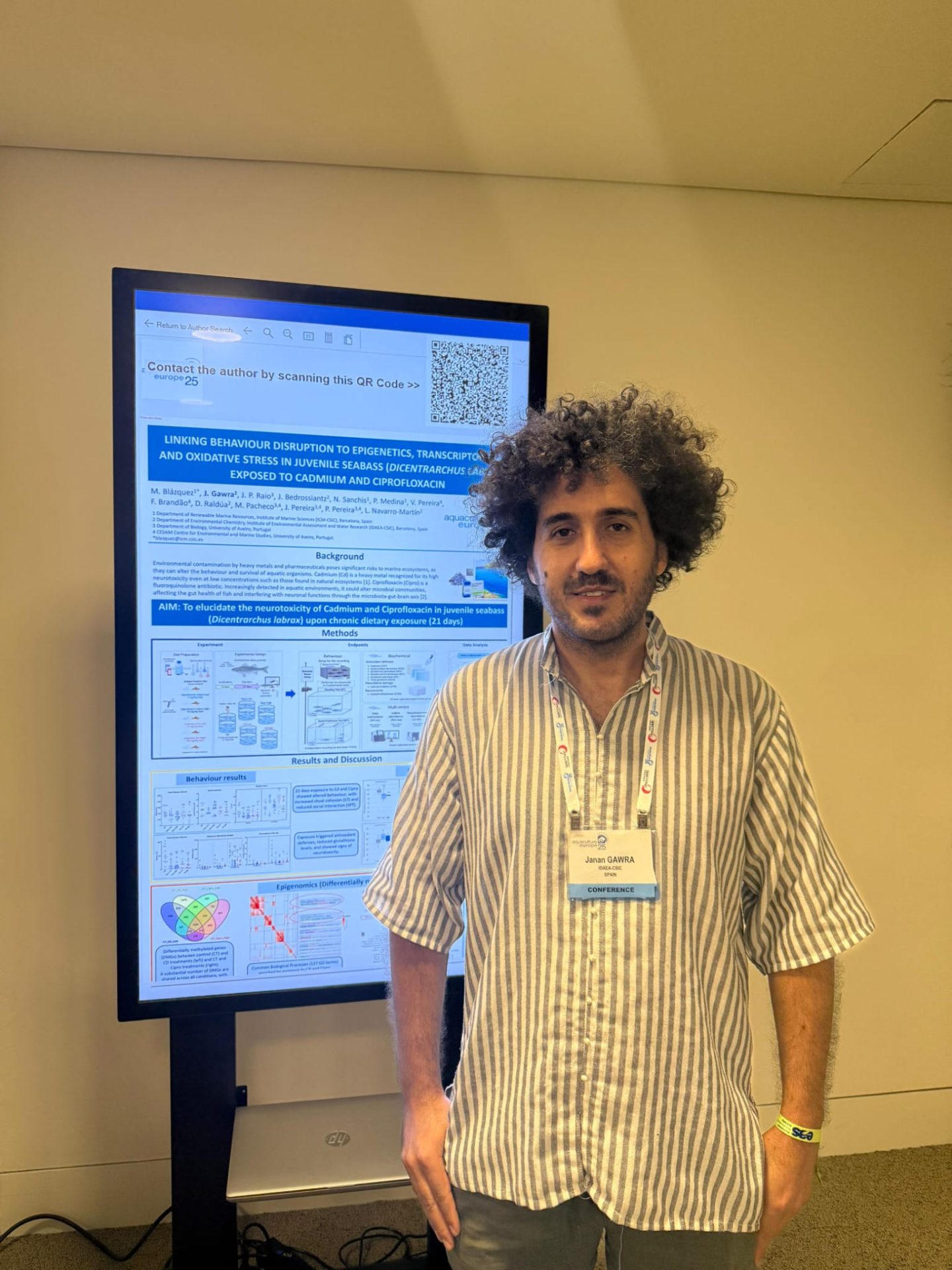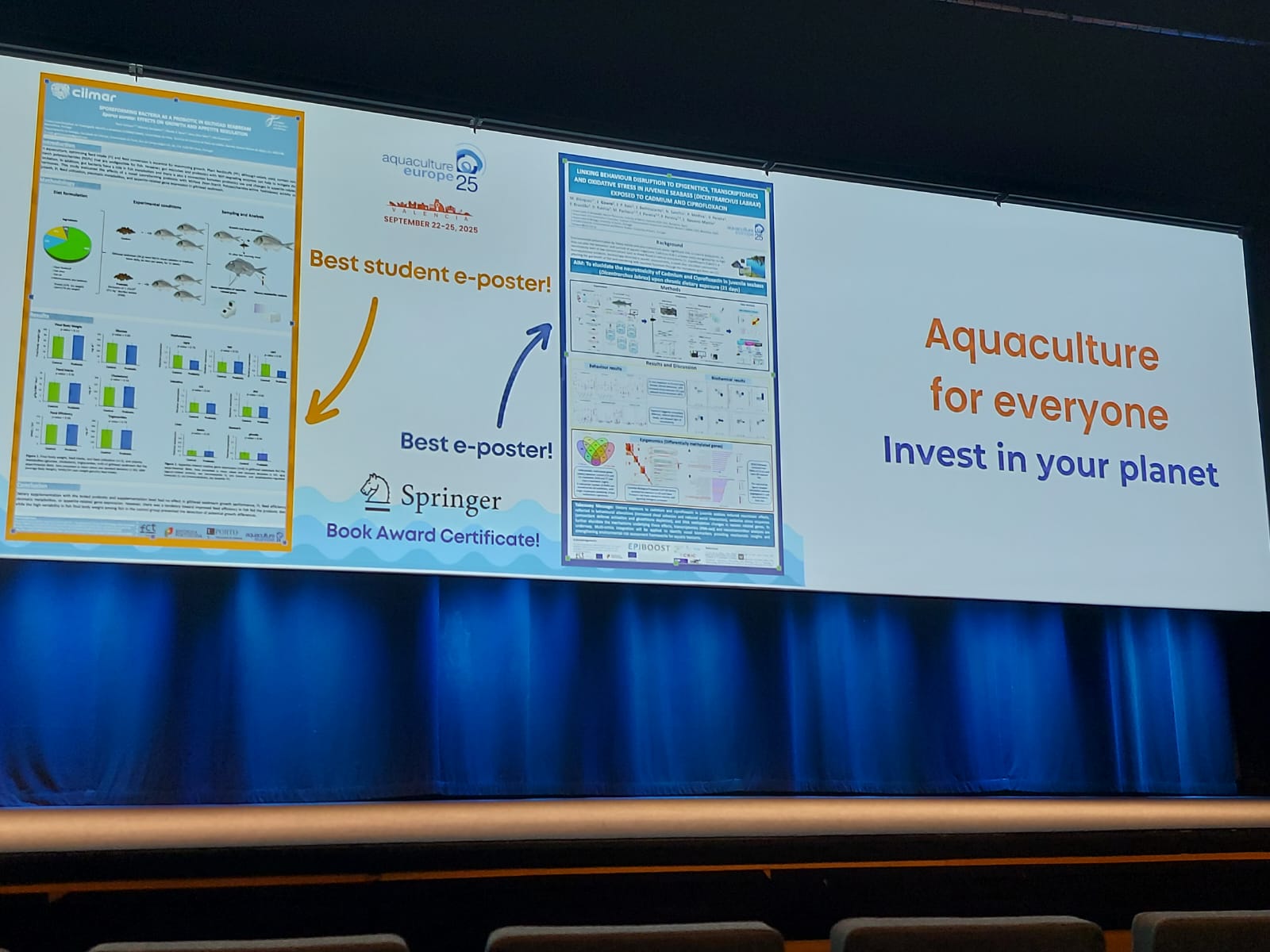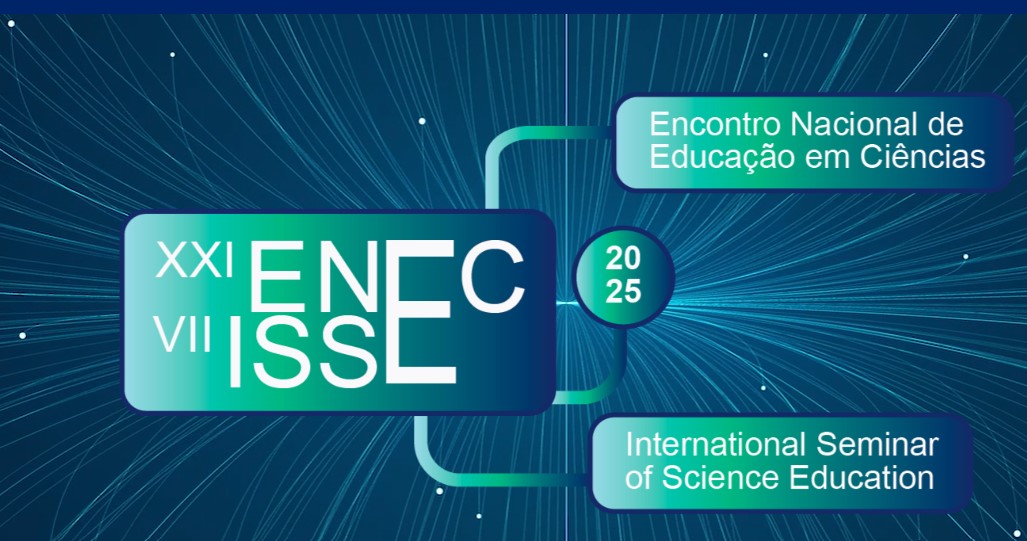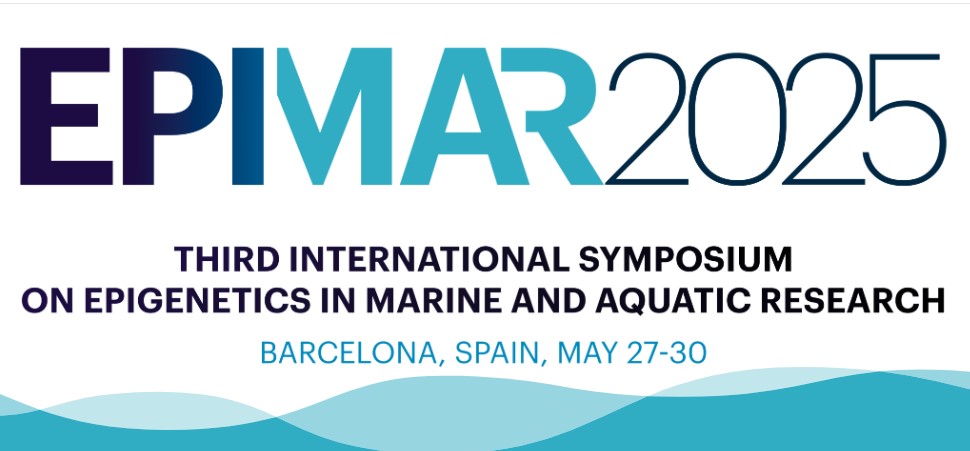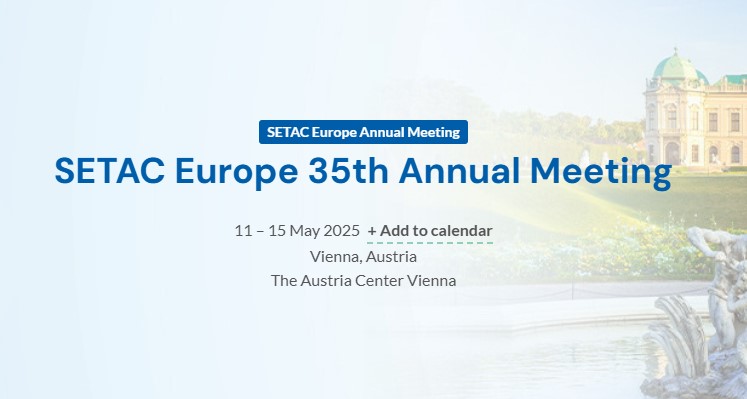PLATFORM SESSION – SETAC Europe 2025
Unveiling Long-Term Ecological Impacts: From Epigenetic Biomarkers to Multigenerational and Chronic Effects of Environmental Contaminants Including Their Mixtures
Chairs: Jana Asselman, Laia Navarro Martin, Joana Luísa Pereira
The interplay of natural and anthropogenic environmental stressors exerts profound impacts on biota, spanning from subtle molecular changes to pronounced phenotypic responses spanning generations. These responses shape the resistance and resilience of individuals and populations over both short and long-term periods, influencing current and future ecological dynamics. Understanding how early-life and historical exposures to contaminants translate into phenotypic effects, even across successive generations, is vital for ecological risk assessment. However, the intricate link between phenotypic outcomes and underlying mechanisms of long term and chronic effects remains largely unexplored. This session seeks to bridge critical knowledge gaps by exploring the stability and persistence of effects in organisms, including but not limited to multi- and transgenerational scales, irrespective of pulse exposure, continued exposure or renewed environmental challenges. Recent studies indicate that developmental and chronic exposure to environmental contaminants such as micro- and nano-plastics, PFOS/PFAS, pharmaceuticals, toxins, and endocrine disruptors can induce persisting and heritable physiological, reproductive, and behavioural effects. These adverse impacts, molecularly mediated namely by gene expression and their regulatory epigenetic mechanisms, may compromise organisms’ fitness and adaptive capacity across generations. We invite contributions that study long term effects of single and multiple stressors. We are particularly interested in studies employing advanced technologies, including genetic manipulations, and omics approaches (transcriptomics, metabolomics, epigenomics), but also novel complex experimental designs to uncover these mechanisms in both model and non-model organisms. Our goal is to facilitate the integration into ecological risk assessment frameworks of biomarkers that can reflect long term effects of contaminants in the biota. We encourage submissions that provide novel insights into the mechanistic basis of long-term ecological impacts, with an emphasis on emerging contaminants and their complex, eventually cross-generational effects. Join us in this session to advance the frontier of ecological research, bridging between molecular biology and ecological risk assessment, and paving the way for more comprehensive environmental protection strategies.
POSTER SESSION – SETAC Europe 2024
Exploring Long-term Ecological Impacts: From Epigenetic Biomarkers to Multigenerational Genomic Effects of Environmental Contaminants
Chairs: Joana Luísa Pereira, Som Niyogi, Laia Navarro Martin, Ramji Bhandari
Environmental stressors, whether natural, anthropogenic, or their interplay, exert a profound impact on biota. This impact spans from imperceptible molecular alterations to distinct phenotypic responses that shape short- and long-term resistance and resilience in individuals and populations, both now and in the future. Understanding how early-life and historical exposures translate into phenotypic effects, even across consecutive generations, is imperative. The link between phenotypic and molecular levels remains largely enigmatic.
Moreover, exploring multi- and trans-generational stability of specific effects and impacts, even in organisms no longer exposed or facing renewed environmental challenges, is crucial. Recent evidence suggests that developmental and chronic exposure to environmental contaminants induces adverse physiological, reproductive, and behavioural effects that are heritable and persist across multiple generations, which can ultimately compromise organisms’ fitness and adaptive capacity. Epigenetic mechanisms are implicated in maintaining these cross-generational effects, but specific epigenetic biomarkers of effects remain elusive.
This session seeks contributions to bridge these knowledge gaps, welcoming insights across taxa and scopes. We encourage studies shedding light on molecular mechanisms, including epigenome modifications, that mediate these effects. Abstracts employing genetic manipulations and omics technologies (e.g., transcriptomics, metabolomics, epigenomics) to uncover mechanisms in both model and non-model organisms are welcome. Our goal is to facilitate the integration of emerging findings on molecular events and multi-generational effects into ecological risk assessment. Emphasis is placed on emerging contaminants, including micro- and nano-plastics, PFOS/PFAS, pharmaceuticals, toxins, priority and persistent contaminants like endocrine disruptors.
POSTER SESSION – SETAC Europe 2023
Epigenetic changes modulating the response of organisms to environmental challenges from phenotypic effects to microevolution patterns
Chairs: Laia Navarro Martin, Jana Asselman, Joana Luísa Pereira
Environmental stressors (natural, anthropogenic and/or their interplay) have an impact in the biota. This impact ranges from almost imperceptible molecular changes to well identifiable phenotypic responses that will shape the short- and long-term resistance and resilience of populations to similar and new pressures. The role of epigenetic changes (e.g. DNA methylation, histone modifications, non-coding RNAs) as the landscape of molecular initiating events of phenotypic change in response to stressors has been acknowledged in general, their incorporation in adverse outcome pathways for the environmental risk assessment of chemicals being advocated in particular.
Despite the evidence in the field has been growing in the recent past, little is known about the normal functioning and natural variation in epigenetic traits for environmental species, on whether or not changes in those traits are responsible for adverse outcomes or on the variability of the scope for epigenetic responses across different species. The generation and sharing of clarifying knowledge in this context is then critical to promote the incorporation of epigenetic responses in risk assessment frameworks as it will allow to better establish (i) reliable epigenetic endpoints and biomarkers; (ii) representative models from different environmental compartments whose epigenome is sensitive and responsible in a stable way; (iii) sources of and ways to control experimental uncertainty; (iv) parallels between epigenetic responses across model organisms and between these and humans; (v) links between epigenomic initiating events and phenotypic effects, completing adverse outcome pathways potentially allowing read-across within specific classes of chemicals; (vi) efficient and sustainable methods to access stressor-induced changes in the epigenome; (vii) guidelines to identify and interpret evolutionary consequences of stressor-induced epigenetic changes. We invite contributions that can provide insights into these gaps, regardless to the taxa or the specific scope focused, and hope that this session can become a fruitful forum to share knowledge, ideas, and discuss future directions that will facilitate the incorporation of the emerging findings in environmental epigenetics into environmental risk assessment in the future.
POSTER COMMUNICATIONS – AQUACULTURE EUROPE 2025
Blázquez M, Gawra J, Raio JP, Bedrossiantz J, Sanchis N, Medina P, Pereira V, Brandão F, Raldúa D, Pacheco M, Pereira JL, Pereira P, Navarro-Martín L (2025). Linking behaviour disruption to epigenetics, transcriptomics and oxidative stress in juvenile seabass (Dicentrarchus labrax) exposed to cadmium and ciprofloxacin.
BEST POSTER AWARD
COMMUNICATION
International Seminar of Science Education 2025
Guerra C, Loureiro MJ. Oliveira D. Pereira JL (2025). A história da Epigenética e a sua divulgação científica no projeto EPIBOOST. Oral communication.
COMMUNICATIONS – EPIMAR 2025
Asselman J. Epigenetics, Pollution, and Climate Change: Insights from Aquatic Invertebrates. Plenary talk.
Gawra J, Correia E, Vieira B, Pereira JL, Domingues I, Laia Navarro-Martin L. Ciprofloxacin and cadmium effects to zebrafish embryos: linking epigenetics and phenotypic endpoints. Poster.
Raio JP, Gawra J, Pereira V, Sanchís N, Medina P, Bedrossiantz J, Pacheco M, Pereira JL, Blázquez M, Pereira P, Navarro-Martín L. Assessing the neurotoxic and epigenetic effects of cadmium on juvenile seabass (Dicentrarchus labrax). Poster.
Pinto A, Macário I, Marques S, Lourenço J, Domingues I, Asselman J, Pereira P, Pereira JL. Saxitoxin effects on Daphnia magna an attempt at linking epigenetic response with phenotypic effects. Poster.
Santos JI, Frankenbach S, Valentim S, Vidal T, Lourenço J, Marques S, Macário I, Fonseca L, Pinhal M, Pinto A, Asselman J, Pereira JL (2025). Epigenetic and phenotypic effects of two contaminants in the marine diatom Phaeodactylum tricurnutum. Poster.
COMMUNICATIONS – SETAC EUROPE 2025
Pinto A, Macário IPE, Geremias G, Marques SM, Lourenço J, Guimarães AR, Marques S, Moura G, Asselman J, Pereira P, Pereira JL. New Insights Into Cadmium Sub-Lethal Effects on Daphnia magna. Oral Communication.
Macario IPE, Vidal T, Santos JI, Pinto A, Brandão F, Marques S, Frankenbach S, Lourenco J, Asselman J, Pereira JL. Sub-lethal Effects of Cadmium and Ciprofloxacin in Freshwater Green Microalgae: Epigenetic and Phenotypic Responses. Poster.
Bedrossiantz J, Gawra J, Sanchis N, Medina P, Raldua D, Pereira JL, Blazquez M, Navarro-Martin L. Neurobehavioral Impairments in the Sea Bass (Dicentrarchus labrax) Chronically Exposed to Cadmium and Ciprofloxacin Contaminated Diets. Poster.
Rodrigues AB, Semmouri I, Pinto A, Macario IPE, Marques S, Lourenco J, Domingues I, Pereira JL, Asselman J. Effects of Cadmium in Acartia tonsa: Epigenetic and phenotypic responses. Poster.
Gawra J, Correia E, Vieira B, Pereira JL, Domingues I, Laia Navarro-Martin L. Linking Molecular and Phenotypic Endpoints in Zebrafish Larvae Exposed to Ciprofloxacin and Cadmium. Poster.
Pinto A, Macario IPE, Marques S, Lourenco J, Domingues I, Asselman J, Pereira P, Pereira JL. A Comprehensive Approach to Saxitoxin Effects in Daphnia magna. Poster.
POSTER COMMUNICATIONS – SETAC Europe 2024
Pinto A, Macário IPE, Marques S, Asselman J, Pereira P, Pereira JL. Aquatic neurotoxins – Multi-parametric Analysis of Saxitoxins Effects on Daphnia magna
Vieira B, Gawra J, Correia E, Pereira JL, Domingues I, Navarro-Martin L. Apical and molecular endpoints in zebrafish embryos exposed to cadmium.
Pereira JL, Asselman J, Navarro-Martin L (2024). EPIBOOST: A Project Aiming to Link Epigenetic Changes to Phenotypic Outcomes in Microalgae, Microcrustaceans and Fish
PLATFORM COMMUNICATION – ICEM conference 2023
Loureiro MJ, Oliveira D, Guerra C, Jeremias G, Pereira JL. The EPIBOOST project: how to promote science communication about epigenetics with digital tools

POSTER COMMUNICATIONS – SETAC Europe 2023
Macário IPE, Arroyo AS, Rodríguez A, Pereira JL, Asselman J, Navarro-Martín L. Incorporating Epigenetics in Adverse Outcome Pathways: the EPIBOOST Project
Jeremias G, Muñiz-González A-B, Martínez-Guitarte J-L, Gonçalves FJM, Asselman J, Pereira JL. Transgenerational Transcriptional Responses in Daphnia magna
Jeremias G, Veloso T, Gonçalves FJM, Van Nieuwerburgh F, Joana Luísa Pereira JL, Asselman J. Multigenerational DNA Methylation Patterns
POSTER COMMUNICATION – EvoKE 2023
Guerra C, Loureiro MJ, Oliveira D, Jeremias G, Pereira JL. Can we assume that “epigenetics has been a driver of evolution”? Promoting public understanding through the EPIBOOST project

The EPIBOOST project identified the coordinators of sister Twinning projects as a relevant stakeholder for the co-elaboration of a good practice guide on the management of widening-twinning projects. This is a document may effectively help the scientific community in the successful implementation of this type of Coordination and Supporting Actions, which greatly act towards the leveling of the European Research Area critical mass.
The Focus group on twinning management involves all sister projects that replied positively to the invitation to engage. Participation happens at different levels of commitment according to the availability of each coordinator. This can involve replying to inquiries, participation in online meetings and/or collaborative writing of the guide, which will be publicly available by the end of the EPIBOOST project. Appropriate acknowledgement of participation, including co-authorship of the guide will apply depending on the level of involvement of each sister project.
Current phase

• All sister projects invited
• Approx. 50% expressed interest
• First survey out in Feb 2023
• First online meeting in April 2023
Next steps
• Survey on guide sections in prep.
• Guide sections elaboration

